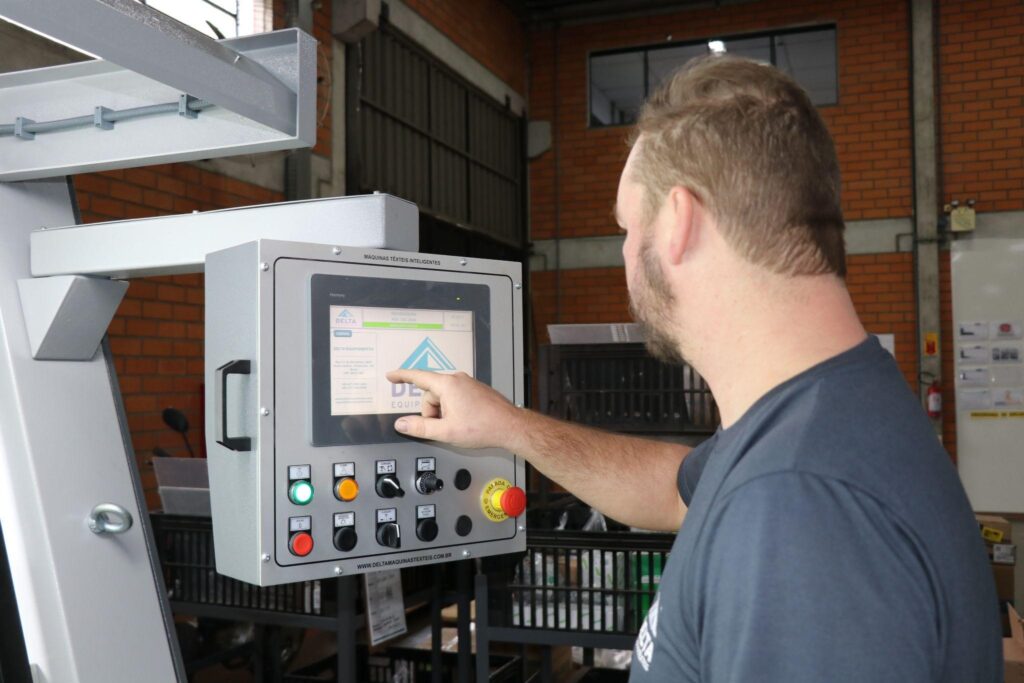In an increasingly competitive scenario, it is important to practice cost reduction, as this action directly affects the company’s profit.
Therefore, this text will address the need to think about this strategy, as well as practices and tips on how to achieve this objective.
Continue reading!
The importance of practicing cost reduction in the textile industry
Cost reduction is the objective of every business that wants to prosper and take advantage of favorable moments to achieve good growth. It would be no different with the textile industry.
In this sector, cost reduction is directly related to productivity, efficiency, standardization and automation. Optimizing activities, with the use of technology, machinery and strategies, reduces waste and rework, increasing productivity, profit and quality of the final product.
However, the current scenario has a great impact on the search for cost reduction as well. This is because changes in the market, in the supply of inputs and in consumer behavior are characteristics that determine the growth, or not, of the textile industry.
In 2021, the sector’s production increased by more than 36% from January to May, compared to the same period in 2020, according to Abit, cited by Correio Braziliense. In 2022, the increase in the value of shipping and cotton yarn has directly impacted the difficulty in maintaining growth.
This demonstrates that in just one year, the context can change significantly, and it is essential to be prepared to face these changes. Here, following production strategies, applying technology and using machines that facilitate production performance are the keys to reducing costs in the textile industry.
Just in Time and the ability to reduce costs
Just In Time (JIT) is a Japanese philosophy that is based on some principles, according to a study on the subject. They help in contributing to the operational performance of the industry. They are:
- Pull production and Kanban control;
- Inventory reduction;
- Reduction of setups;
- Quality at source (Jidoka);
- Relationship with suppliers;
- Teamwork and participation;
- Continuous improvement.
Also according to the study, the basic concept of Just in Time is to reduce or eliminate unnecessary assets and work throughout production, with the aim of being efficient, clean and fast. “In other words, it is a flexible production model that, according to Cerra & Bonadio (2000), increases the rationalization of the production process, obtained through the participation of direct labor and guides the reduction of costs and the elimination of any type of waste”.
And by practicing this philosophy in your industry, as already mentioned, it is possible to reduce costs, optimize production and improve communication between all professionals in the company. These benefits are only possible thanks to JIT principles that aim to reduce rework to increase productivity and quality of the final product.
Other good practices to reduce costs in your industry
Below are some good practices that help in the search for cost reduction in your textile industry.
Invest in technology

Technological processes are essential to optimize production. Industry 5.0 is a concept that seeks to personalize products in order to connect with digital platforms to facilitate interconnected processes and automate production.
Here, the junction between man and machine is essential to generate a balance focused on quality development and production. Therefore, technology becomes an allied tool to avoid waste and rework.
Software, applications and management programs, and automated tools are the basis of this new reality and need to be used to have a smart factory aimed at increasing profits. A study on the subject points out that smart factories could add between US$ 1.5 trillion and US$ 2.2 trillion annually, by 2023.
Empower your team
One of the principles of JIT, teamwork and participation, demonstrates the importance of workforce qualification. So, whenever you feel the need, invest in training your team.
This investment facilitates alignment with your business purpose and tends to encourage greater engagement. Furthermore, when realizing the concern and appreciation for professional improvement, the employee will feel more comfortable in suggesting improvements and solutions.
This characteristic is important, considering that he is directly responsible for the production stages in which he operates, and therefore will be better able to say what the areas for improvement are. And you will also know how to use the available features and tools efficiently and productively, performing better.
Track the results
Monitoring the results of processes is essential to understand and analyze what has worked or not. Technology is also an ally at this time, as integration between machines, through software, can generate interesting results for more complete and in-depth studies.
Therefore, it is necessary to pay attention to the indicators of each process and document the advances and declines. Remember that it is only necessary to follow up with those who agree with your business’s objectives and goals. At this moment quality is more important than quantity. Focusing on the most significant metrics means there is no confusion or much work to understand and analyze them.
An example of an indicator is the OEE (Overall Equipment Effectiveness) calculation. He works to measure the efficiency of industry equipment, focusing on the analysis of productivity indices. Download our free spreadsheet to learn how to perform this calculation.
Cost reduction and optimization with Delta textile machines

Investing in machinery is also a way to reduce costs. Obsolete machines no longer match the practices and strategies that favor and help development in the current scenario. The concepts of industry generations help to identify and adapt to the most efficient and productive equipment, reducing input costs, waste and rework.
Furthermore, focusing on quality production increases the added value of your product, facilitating profit. Therefore, at this moment it is important to have in-depth technical knowledge about the current context and new technologies.
Our solutions are designed for each stage in order to encourage optimization, efficiency management and quality of processes. The goal here is to generate accurate data and information about your production capacity to guarantee lower costs and increase your competitiveness.
Some of the benefits of our machines at each stage:
Finishing
For the finishing phase we have the MWS033 iConcept Flow Tubular Mesh Opener. It makes it possible to work on tubular meshes in a more intelligent and precise way. This solution was designed to untwist, open and cut this input, facilitating productivity, increasing the pace and quality of production.
The KTS100 iConcept Opti Cut Edge Trimmer has an automatic search and also reduces material waste and waste.
Manufacturing
For manufacturing, the RLX600 DLT four Concept Mesh and Fabric Relaxer eliminates the 24 or 48 hour time normally used for resting. Furthermore, it increases wrapping productivity and eliminates sizing defects in parts, avoiding rework. It is possible to add that it is more assertive in the fitting process, as well as in the automated and standardized process, offering immediate relaxation from roll to roll.
And the REV150 iConcept View Mesh Reviewer has an alignment system to ensure roll quality, and a synchronization and stretching control system. This machine also facilitates constant monitoring of width and footage, operation and productivity gains.
Both machines comply with Regulatory Standard NR12.
Stamping
The Doga Mobile CDW022 Centralizer is a good option for the printing sector. It has an automated system for centering and aligning the mesh or fabric. And it also offers a traction and synchronized cylinder to avoid stretching.
Meanwhile, the Hydro Sprinkler Hat 021 iConcept Eco has the advantage of reducing the impact of breakage during processing and returns the fiber to its natural regain. It also improves the stitchability of the fabric, and gives it a better touch and fit.
Weaving
In the weaving sector, the REV550 iConcept View Mesh Reviewer has a broad view of possible defects, and increases productivity and quality standards with simultaneous inspection of both sides.
Dyeing
Finally, for dyeing, the PMA/PMT Mesh Preparator benefits this sector by providing an inspection table with top and bottom lighting for easy operation and productivity gains.
And if you want to understand more how our solutions can help reduce your costs, talk to one of our consultants.

